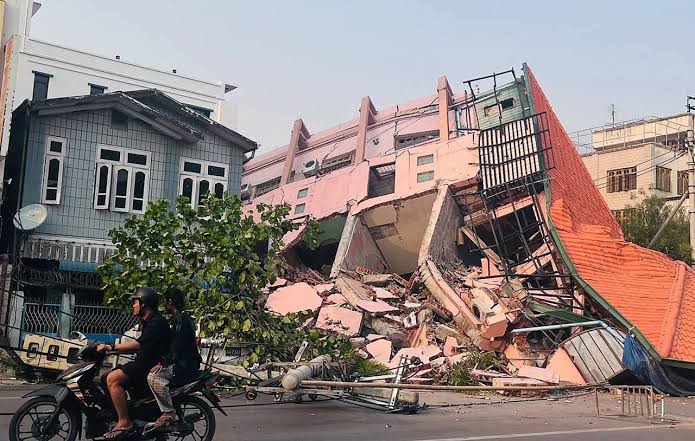Rescuers carry equipment and search the rubble for survivors in the aftermath of a massive earthquake that struck Myanmar on March 29, 2025. The tremor, which struck near the city of Mandalay, has led to over 1,000 confirmed deaths and more than 2,000 injuries.
Experts indicate that this could be the most powerful earthquake Myanmar has faced in decades, with initial disaster modeling suggesting a death toll that could rise into the tens of thousands. According to the United States Geological Survey (USGS), the 7.7-magnitude earthquake was shallow, sparking a red alert for fatalities and extensive economic damage.
With Myanmar’s already weakened infrastructure due to ongoing civil conflict, the response to this natural disaster is expected to face significant challenges. “High casualties and widespread destruction are highly likely,” the USGS report stated, noting the epicenter’s location near Mandalay, a region home to over a million people.
Experts caution that the situation could worsen. Professor Bill McGuire from University College London (UCL) stated that this could be the most significant earthquake in Myanmar in the past 75 years. He further warned that additional aftershocks could follow.
Rebecca Bell, a tectonics expert from Imperial College London (ICL), explained that the earthquake resulted from a “strike-slip” along the Sagaing Fault, where two tectonic plates meet. The fault is long, straight, and capable of producing major earthquakes. “Such quakes tend to be extremely destructive,” she noted, emphasizing that the shallow depth meant the shaking was felt intensely in populated areas.
In recent decades, Myanmar has experienced rapid urbanization, including a surge in high-rise buildings made from reinforced concrete. This increase in construction, combined with lax building codes, has raised concerns over the country’s preparedness for major quakes. Seismologist Brian Baptie stated that this earthquake will be the first to test modern Myanmar’s infrastructure against such a powerful, shallow earthquake.
As the search for survivors continues, experts are also worried about the vulnerability of Myanmar’s construction sector. While the country’s infrastructure was once predominantly low-rise and timber-framed, modern construction using unreinforced brick and timber in many buildings in affected regions has made them highly susceptible to collapse during strong earthquakes.
This tragedy also affected neighboring Thailand, where even distant cities like Bangkok were shaken. A 30-story building under construction in Bangkok collapsed, trapping workers. Experts attributed the severe damage to construction techniques that do not adequately account for earthquake impacts, especially in high-rise structures.
As rescue teams continue to search for survivors in both Myanmar and Thailand, authorities in Bangkok have dispatched over 100 engineers to inspect buildings across the city. The aftermath of this natural disaster highlights not only the immediate dangers posed by powerful earthquakes but also the long-term risks related to inadequate building infrastructure in earthquake-prone regions.

